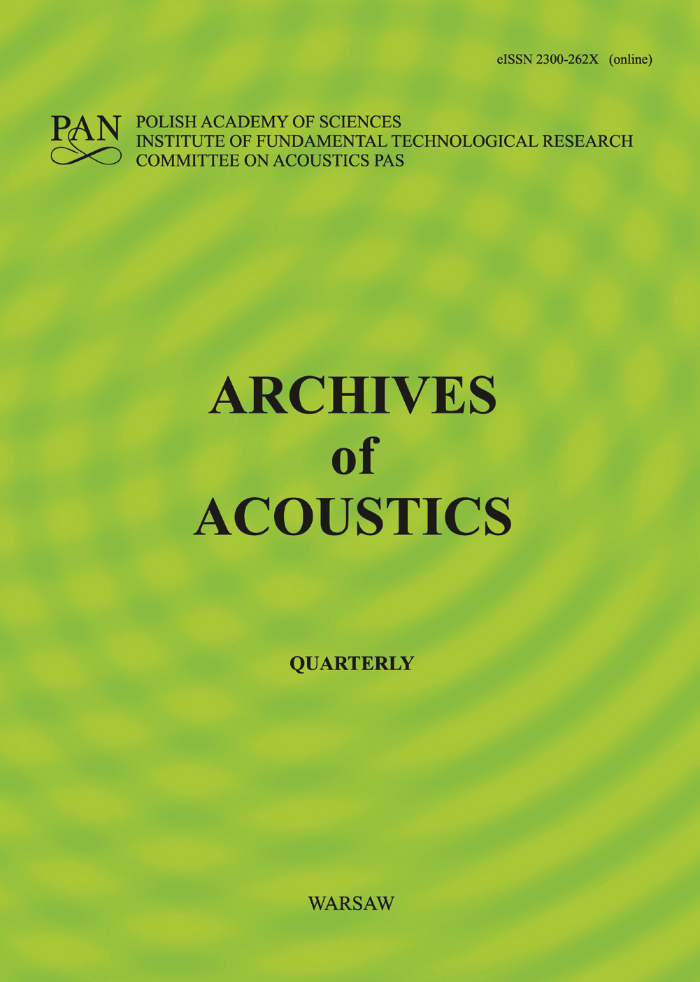Theoretical and experimental analysis of the band noise radiated from a hard-walled cylindrical duct
Abstract
The paper presents, basing on the results obtained for the single tone and multitone excitations, the theory of the white noise propagation in and radiation from a cylindrical duct. The duct is assumed to be semi-infinite and hard walled, the excitation axisymmetrical and with no mean flow. Solution of the wave equation with adequate boundary condition constitutes a base of the carried out analysis. It allows for propagation of certain number of wave modes, which cut-on frequencies are below the excitation frequency. Anyhow, when more than one mode are present the analysis of the sound field complicates, as it requires the knowledge of modes complex amplitudes. To make any quantitative comparison between the theory and experiment possible two extra assumptions are incorporated into the theory: on the equipartition of the density of energy between all modes admissible at a given frequency and on their random phase. The second assumption results in the necessity of describing the acoustical field by means of the expected value, the variance and the standard deviation of the pressure, the intensity, the power output etc. The paper contains the directivity characteristics of the pressure and the intensity and evaluation of the power output for the one third octave (tierce) band white noise.References
[1] U. BOLLETER, M.J. CROCKER, Theory and measurement of modal spectra in hard-walled cylindrical duct, J. Acoust. Soc. Am., 51, 1439-1447 (1972).
[2] P.E. DOAK, Excitation, transmission and radiation of sound from source distributions in hard-walled ducts of finite length. I. The effects of duct cross-section geometry and source distribution space-time pattern, J. Sound Vib., 31, 1, 1-72 (1973).
[3] P.E. DOAK, Excitation, transmission and radiation of sound from source distributions in hard-walled ducts of finite length. II. The effects of duct length, J. Sound Vib., 31, 2, 137-174 (1973).
[4] DUHAMEL, Improvement of noise barrier efficiency by active control, Acta Acustica, 3, 1, 25-35 (1995).
[2] P.E. DOAK, Excitation, transmission and radiation of sound from source distributions in hard-walled ducts of finite length. I. The effects of duct cross-section geometry and source distribution space-time pattern, J. Sound Vib., 31, 1, 1-72 (1973).
[3] P.E. DOAK, Excitation, transmission and radiation of sound from source distributions in hard-walled ducts of finite length. II. The effects of duct length, J. Sound Vib., 31, 2, 137-174 (1973).
[4] DUHAMEL, Improvement of noise barrier efficiency by active control, Acta Acustica, 3, 1, 25-35 (1995).


